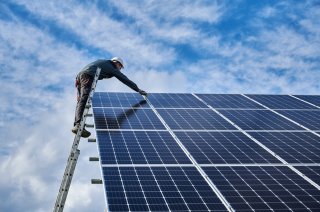
category_news
Greatest peaks in solar yield on cloudy days
Solar energy is not just generated on sunny days. It is the cloudy days that show spikes in the yield of solar arrays of up to 20 per cent higher than when skies are clear. This is the outcome of a sub-study conducted by Wageningen University & Research, grid operator Liander and other parties, on the impact of solar energy on the power grid.
Solar energy is generated in fluctuating patterns. The sun doesn’t shine every day, and when it does, the intensity of its rays differ per location. In collaboration with the KNMI (the Royal Dutch Meteorological Institute) and Utrecht University, WUR studies the effect of different weather types on these fluctuations. The insight thus obtained is relevant to manage the electricity network safely.
Partial cloud cover can increase the yield due to the reflection of light on the clouds
Power-peaks in cloudy days
The first sub-study showed that peaks in power generated are not limited to clear days. In fact, partial cloud cover can intensify these peaks. Researcher Frank Kreuwel says this is due to the reflection of light on the clouds. ‘Solar panels yield more energy with more light and when they are cooler. Clouds are white because they reflect the light. When there are a lot of cumulus clouds, the clouds cause extra light to be reflected onto the panels.
Moreover, the partial cloud cover helps the panels cool in the shade. On clear days, panels can reach temperatures of up to 60 degrees. If they can cool down now and again, this increases their efficiency. If this alternates with some extra light that is reflected by the clouds, a typical household solar array can show yield increase peaks of up to 22 per cent.’
The results of this study will help grid managers to utilise the network better
Insights benefit efficient grid management
This information is relevant for a better insight into the effects of the sun on the power grid. Most of the solar energy is generated on clear days, but the highest peaks occur on cloudy days. Since an increasing number of households opt for solar panels, this may cause issues in the low-power cables that connect houses to the grid. The results of this study will help grid managers to utilise the network better and, thus, contribute to the dependability of the future power supply.
Chiel van Heerwaarden, the study’s project leader: ‘WUR aims to provide the scientific foundations for sustainable solar parks that benefit the economy, the environment and society. Our WUR Solar Research Programme is one of the ways in which we achieve this. Understanding how solar arrays react to varying weather circumstances is an important aspect of this ambition.’